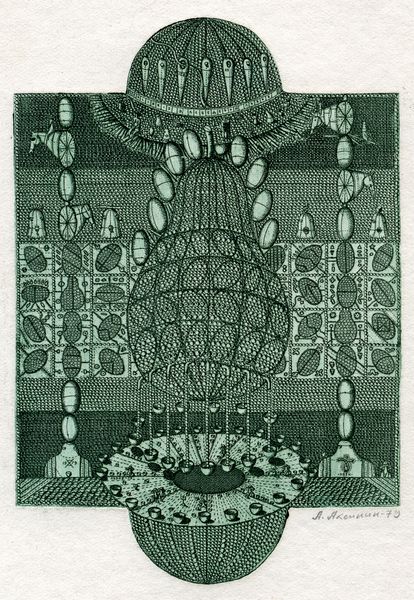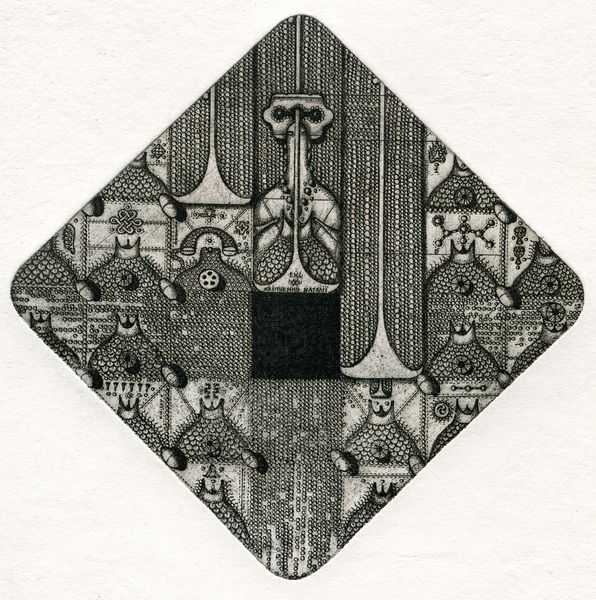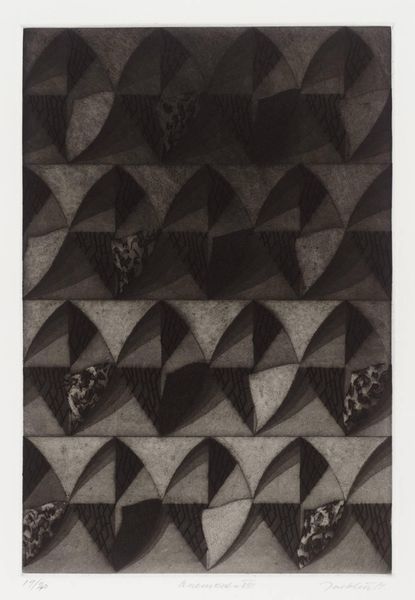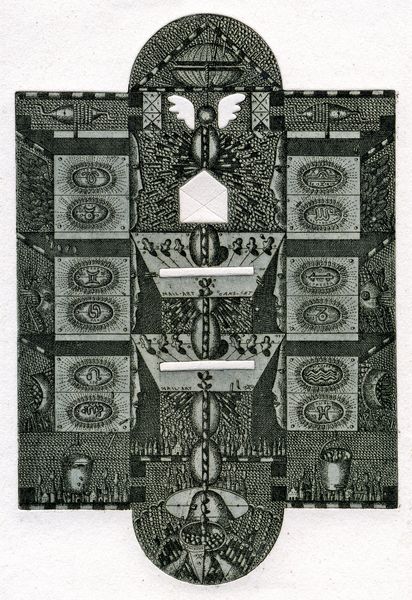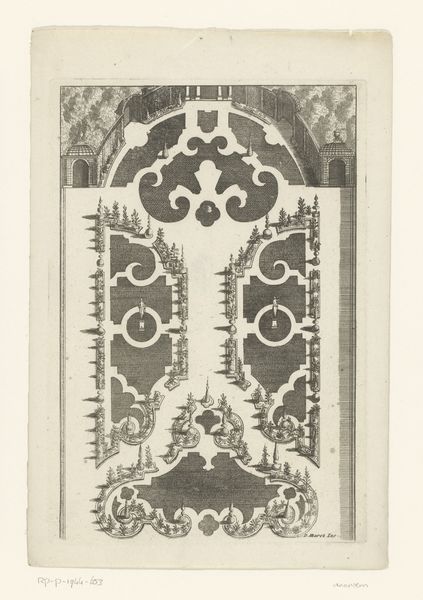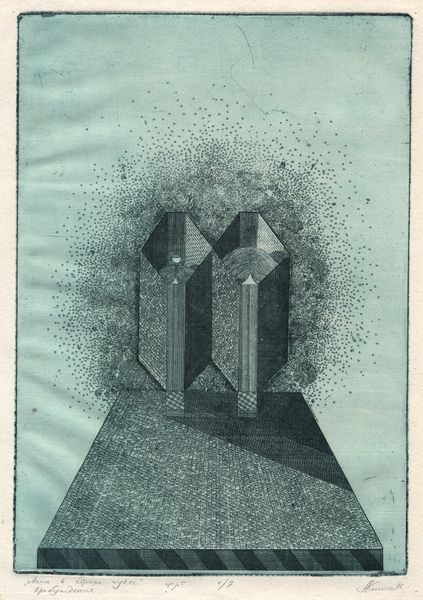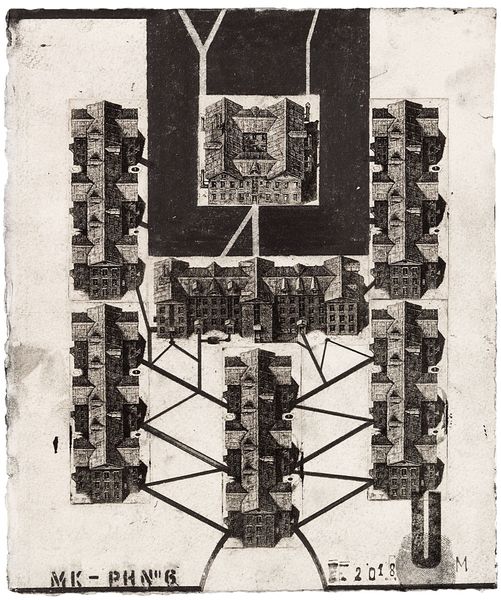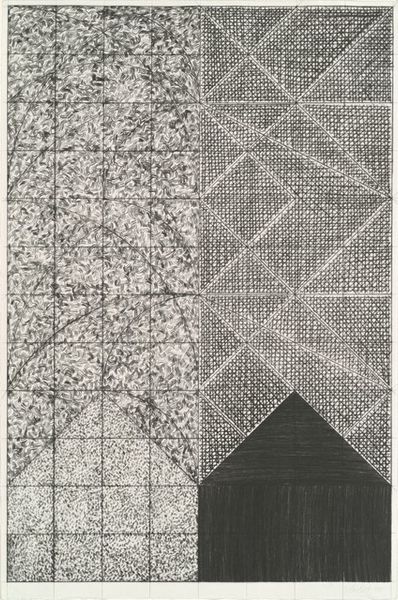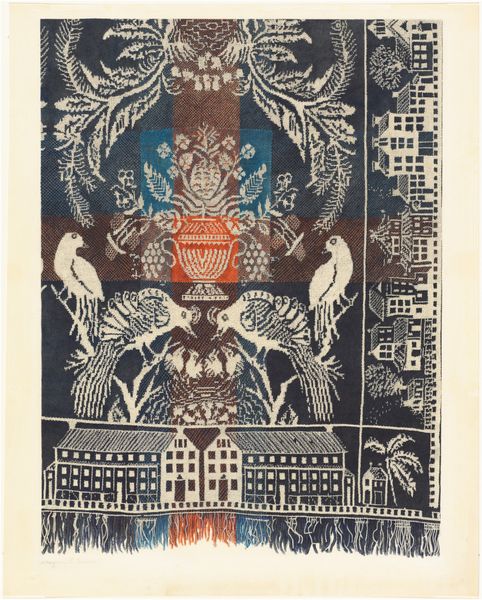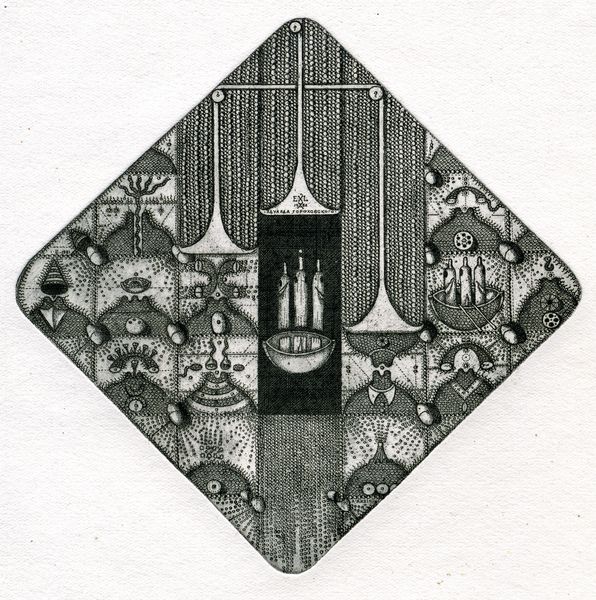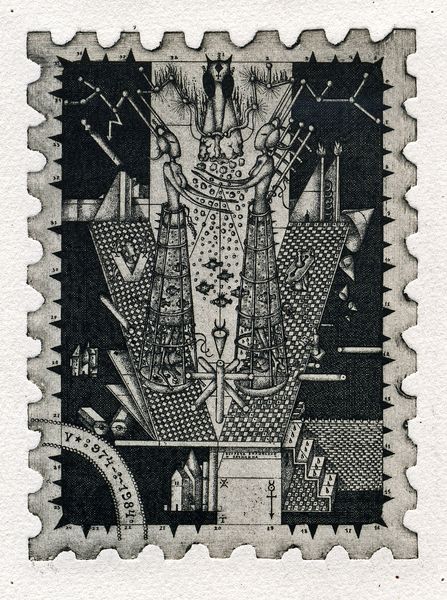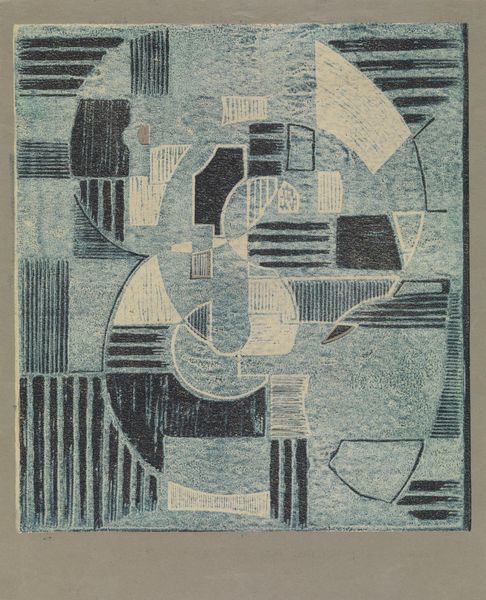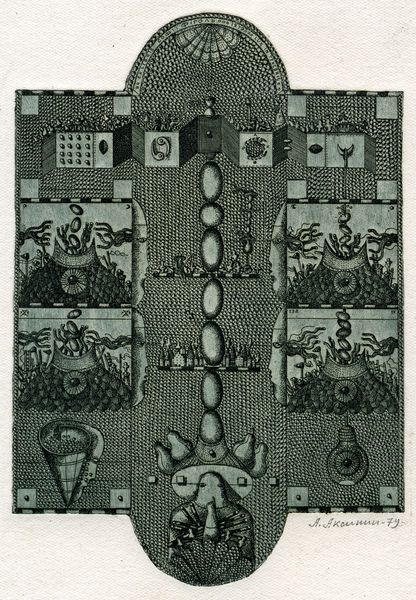
Copyright: Oleksandr Aksinin,Fair Use
Curator: This is Oleksandr Aksinin’s “Exlibris of K.Tovstiuk,” a print dating to 1979. Aksinin, a Ukrainian artist, worked primarily in graphic arts, and this piece exemplifies his intricate linework and symbolic vocabulary. Editor: It feels…claustrophobic. A beautifully rendered, contained chaos. There's a tension between rigid geometric forms and teeming patterns, like a mind struggling to impose order on something fundamentally unruly. Curator: Ex libris plates, like this one, are inherently personal, marking ownership but also serving as miniature artistic statements. Considering the period – the late Soviet era – could this be seen as a quiet act of defiance? Individual expression, intellectual property even, subtly challenging the collective ethos? Editor: Absolutely. Books are potent symbols – vessels of knowledge, stories, and resistance. Look at how Aksinin visualizes these ideas. Open books display ranks of figures, repeated almost mechanically. Do you think the artist conveys a critique about societal roles? Perhaps contrasting individual vs group identities within a regime? Curator: That resonates. The rigid geometry further emphasizes that theme. Also, notice the recurring motifs—the stylized fans, the geometric latticework. The image as a whole has many decorative shapes repeated throughout, hinting perhaps at underlying psychological dimensions beyond just decoration. Editor: Yes, there's something ritualistic about their repetition. These icons suggest a yearning for a time beyond this regimentation, a nostalgic view for past ways of expression through visual objects as memory devices. A visual culture struggling to maintain identity against a dominant narrative? Curator: The scarcity of information around Aksinin's life invites this speculative reading, really. And it allows this plate to transcend its initial function and speak to larger struggles—oppression and the importance of visual culture under oppressive forces. Editor: Thinking about this graphic today highlights this tension even further. We’ve explored how even small, ostensibly decorative pieces such as this become tools to express dissent. That elevates the piece's emotional weight in today's understanding. Curator: Indeed. The print becomes a powerful symbol reminding us about culture beyond specific locations. The act of expressing individual vision. The ex libris is a subtle tool of cultural and emotional resistance.
Comments
No comments
Be the first to comment and join the conversation on the ultimate creative platform.
